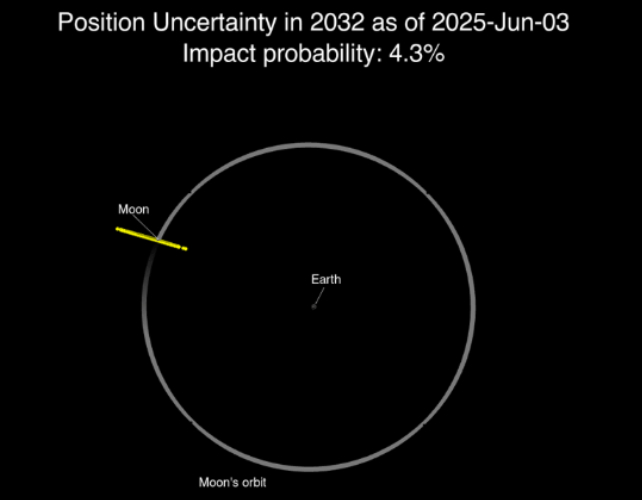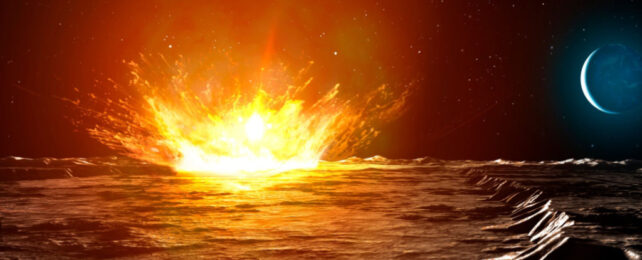An asteroid that burst onto the scene with an unusually high risk of striking Earth has just had its collision risk upgraded.
In February 2025, asteroid 2024 YR4's maximum collision risk with our homeworld when it swoops back around in 2032 was projected to be 3.1 percent.
Now its collision risk has risen to 4.3 percent – not with Earth, but the Moon.
That's not particularly high, sure. But it's high enough to be pretty exciting. This impact wouldn't destroy the Moon or even affect its orbit; but it would be scientifically interesting to see the formation process of a large crater (and also really cool).

2024 YR4 announced itself with a bang. Initial calculations of its trajectory found that it could collide with Earth in December 2032. The risk wasn't huge, but 3.1 percent is still alarmingly high for an event that could wipe out a city – the chunk of rock measures between 53 and 67 meters (174 and 220 feet), comparable to the size of the asteroid that devastated Tunguska in 1908.
Thankfully, it didn't take long for that risk to be downgraded to less than a fraction of a fraction of a percent, effectively ruling out the possibility of an Earth-2024 YR4 collision entirely.
The Moon, however, remained in the firing line, with a collision risk of 3.8 percent.

Now, using new JWST observations obtained in May 2025, astronomers led by Andy Rivkin of Johns Hopkins Applied Physics Laboratory have refined that calculation, bumping the risk to 4.3 percent.
That's probably still not the final word on the matter; tracing an asteroid's trajectory takes repeated observations, and 2024 YR4 is now too far away for us to see.
It comes around close to Earth every four years, so astronomers are going to have another opportunity to observe it closely in December 2028. We'll know with more precision then how likely the chunk of space rock is to smack into our satellite and give us a wild show (and a bunch of science).
